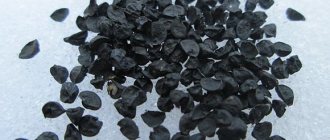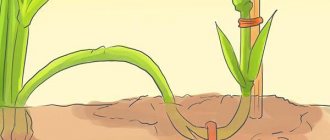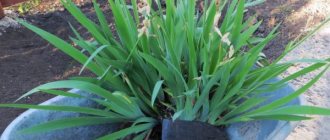Lawn grass looks beautiful and neat in a garden plot or near a country house. It becomes the basis for flower beds, or an independent crop, giving the territory neatness and well-groomedness.
Is it possible to sow a lawn in the fall? In order for it to take root well and not die from drought, it is necessary to choose the right time for planting. Some people think that this is not so important, because this can be done throughout the warm season, but it is better to take into account the recommendations in order to avoid annoying mistakes.
When is the best time to plant lawn grass: spring or autumn?
Choosing a good time for sowing lawn grass largely depends on the region, seed material, soil conditions, and their location. In addition, it is worth considering that crops in spring and summer require more careful care in the first days. Soil preparation, weed control, fertilization - there are differences depending on the season. But summer and spring shoots will please you immediately, but autumn shoots will have to wait until next year. If you sow a lawn in the spring, then for the first 2-3 weeks it is necessary to moisten the soil and actively get rid of weeds. In summer, do not allow it to dry out on hot days. It is good to apply fertilizers with nitrogen in the first spring months for active growth and development.
In the fall, less watering will be required, the weeds are no longer so active, and the sprouts will have time to get stronger before frost. Some gardeners even plant in frozen ground, before snow cover appears. In this case, the seeds undergo stratification, becoming stronger and acquiring disease resistance. In the fall, it is better to fertilize with potassium and phosphorus; to strengthen the root system, much less nitrogen is required at this time so that the seedlings can easily tolerate low temperatures.
On a note! In the spring, it is better to sow lawn grass in early May; in the fall, September (no later than the 25th) or November (if there is no snow) is suitable. For summer planting, it is recommended to choose a rainy, windless period so that the seedlings do not dry out.
Preparing the area for the lawn
To ensure that the lawn grows evenly and pleases the eyes of everyone passing by, it is recommended that 3-4 weeks before sowing, you prepare the area for planting. Agronomists advise starting with clearing the intended area of debris, weeds and stones that accidentally ended up on the soil. If possible, using a shovel, it is worth digging the soil onto the spade bayonet, treating it with possible diseases and pests, and then planting natural green manure. With their help, the earth will be restored, without the application of fertilizers and mineral complexes, normalizing the level of acid-base balance.
If the future planting site is overgrown with perennial weeds, herbicides offered to summer residents in gardening stores will help to escape from strong roots that are well rooted in the soil. With their help, you can easily get rid of grass without harming the lawn, both before and after planting. The product directly affects only wild plants, leaving lawn grass and fruit crops safe.
Unfortunately, in order for the green cover to germinate evenly, it is worth taking care of leveling the planting area. Depending on the volume, it may take a little time or a whole day.
Apply complementary foods to the soil or use proven green manure, the choice depends on the gardener. However, before making a choice in favor of any of the options, it is worth analyzing what will bring the maximum benefit. Lawn grass absorbs more phosphorus and potassium than nitrogen. Based on this principle, fertilizing is selected during the first phase of rooting of the first shoots before wintering.
In the spring, when the lawn begins active vegetation, it is worth paying special attention to potassium and nitrogen fertilizers, reducing the amount of phosphorus by half. Mostly, it is worth choosing complex fertilizers that can compensate for the lack of each substance.
Subsequent feedings are not limited in time and volume. The most important thing is not to overdo it! Experienced summer residents, sharing their experiences on local forums and social networks, recommend replenishing the lack of nutrients once every one and a half to two months. This interval is quite enough so that the grass does not lose its healthy appearance, evenness and rich shade.
For watering, they prefer spraying. In autumn, when hot weather gives way to rainy days, watering is reduced or completely eliminated. From mid-spring to the end of summer, when air temperatures rise, humidity support is increased, preventing the soil from drying out. This approach prevents the blades of grass from losing their color and shape.
Advantages of autumn sowing
Each season has its pros and cons for planting lawn grass. Each gardener chooses his own time, analyzing for himself all the possibilities and advantages. Autumn sowing is preferable for a number of reasons:
- the absence of heat, which allows you to pay less attention to watering, has a beneficial effect on seed germination;
- soil and air humidity without sharp fluctuations;
- weeds are no longer growing as actively as in the spring;
- sprouts sprout in a dense layer and grow higher;
- the root system is formed stronger, and the grass is resistant to diseases;
- the soil does not require long preparations.
How to calculate the number of seeds?
To calculate the seeding of a grass mixture for a certain type of grass that is part of it, a special formula is used , and the results are summed up. The seed sowing rate (kg/ha) must be multiplied by the percentage of the amount of this type in the mixture and divided by the actual suitability of the seeds. As practice shows, in order to sow quality lawn grass, you need to increase the seed consumption by 2–3 times.
If you need to sow only one type of grass, then you need to follow the seeding rate of the selected crop. On average, the consumption of lawn grass seeds per 1 m2 is 30 - 50 grams .
Features of autumn lawn planting
In the spring, before planting, it is necessary to clear the lawn of debris, apply fertilizer, and then let the soil lie fallow for at least 40 days. Sometimes this requires a lot of time, which is more important to spend on planting vegetables, herbs, pruning bushes and trees. Seeds planted in the fall will not require complex care when spring arrives, but with the onset of warm weather they will quickly begin to delight with their greenery. During autumn and winter, the sprouts form a strong root system, which only emerging weeds cannot greatly affect.
You may be interested in:
What kind of lawn grass destroys weeds? There is no such piece of land that would not be attacked by weeds. As for the lawn, weeds look ugly on it and...Read more...
If the winters in the region are harsh, you will have to cover the lawn with peat and spruce branches to insulate it. It is difficult to correct autumn seedlings if they have sprung unevenly, because there is no time to correct them. In this case, you will have to finish sowing or redo it completely in the spring. The choice of seeds must be more careful so that the varieties can survive the winter without dying. In areas with a slope, it is better not to plant lawn grass in the fall, because when the snow melts, spring meltwater washes the seeds out of the soil.
On a note!
Autumn sowing should not be delayed too much; all work should be completed no later than 30-40 days before the onset of frost.
Selecting Lawn Grass Seeds
To create the right lawn with your own hands, you should choose the right seed . It is imperative to consider the purpose for which the lawn will be used, because there are different grass mixtures or herbs. To grow a beautiful lawn, use the following types of grass:
- meadow bluegrass;
- common bluegrass;
- common ryegrass;
- fescue;
- bentgrass;
- creeping clover;
- festulolium;
- hedgehog
When choosing seeds, the sowing time should be taken into account. Different types of grass have different frost resistance and growth rates. For example, bluegrass grows quite slowly in the first years. Also, when choosing seeds, you need to take into account the height of the planned lawn at the dacha, the quality of the turf, etc. Different grass mixtures require different soil , they can differ in seeding rates and many other characteristics.
Step-by-step instructions for autumn sowing of a lawn
After building a house and improving the surrounding area, you can devote time to the lawn. In order for the process to be successful, and for the green cover to please the eye in the spring, it is necessary to take into account the rules that will make this process easier and more effective. The choice of seeds, soil preparation, and fertilizers are important steps, the observance of which will allow you to decorate the site for a long time.
Autumn planting dates
In the fall, it is possible to sow the seeds twice - at the end of August, beginning of September, or in October, early November. In the first case, it is important to take into account that at least 40-45 days must pass between the planting period and the onset of frost. In this case, a strong root system will have time to form, and the above-ground part will grow up to 10 cm. Sudden night frosts can destroy crops, so it is better not to delay this process, starting a little earlier.
Before winter, sowing at the end of October, beginning of November is possible even in frozen soil. In this case, the seeds will undergo a natural process of stratification, which makes it possible to grow active and friendly seedlings in the spring. To prevent the seed material from dying, it is worth considering the planting time when choosing grass varieties. There are also risks - if after sowing warm weather suddenly returns with temperatures above +5°C, then the germination period will begin, as a result of which the seedlings will die from the cold.
Site preparation
Before sowing, the land must be properly prepared so that the result is a beautiful green carpet in front of the house. The first step is to completely clear the area of anything that might interfere:
- construction garbage;
- stones that cannot be included as an addition or island;
- branches;
- old stumps;
- dry bushes, trees.
In an area where nothing has been planted for a long time, or where it is being cultivated for the first time, it is better to treat the soil with herbicides. Then, during germination, minimal weeding will be required.
When the place has been cleared and processed, it is necessary to start digging to remove small plant roots and remaining debris. It is better to lighten clayey, viscous soil by adding fine gravel or sand, then aeration will be better. Add compost or humus to the sandy soil. For good growth of lawn grasses, the optimal acidity is 5.5-7 pH; if it is higher, liming is carried out with lime or dolomite flour.
In areas with high humidity, it is better to arrange drainage:
- Remove the top layer of soil.
- Stones, broken bricks, pebbles are poured on top in a layer of 15-20 cm.
- Lay a layer of sand 8-10 cm thick.
- The surface is leveled and compacted with a special roller or thick log.
- Return the removed fertile layer to its place.
On a note!
If a drainage system or automatic drip irrigation is provided, their installation is carried out at this stage, while the top layer is removed.
Allow 10-15 days for the soil to settle, after which the territory is leveled again, filling in the holes and leveling the hummocks. Now you can apply fertilizers with potassium and phosphorus, or special mixtures for lawns. The granules are properly mixed with the soil using a rake, leveling along the entire perimeter. Finally, compact again with a roller or thick log, and water generously for additional stabilization.
Methods for compacting earth on the site
After the soil has been leveled, it must be compacted so that when germination occurs, the layer is more even, and during mowing, the lawn mower does not “stumble” over uneven surfaces, breaking the blades. On an uncompacted lawn, the seeded grass will be uprooted during the first mowing. Level the area with a vibrating plate or a special roller until there are no traces left when walking. Not everyone is ready to spend money on purchasing additional equipment that may be used once, so sometimes they use other devices:
- a wide board or log with ropes tied at the ends;
- barrel filled 1/4 with water;
- boards tied to feet or slippers;
- concrete ring.
You may be interested in:
Leucanthemum nevus: growing from seeds We share the secrets of how to grow beautiful and healthy Leucanthemum nevus flowers from seeds. Delicate flower with…Read more…
Treating the area with herbicides
There are many different preparations on the shelves for gardeners, so when choosing, questions arise - which ones to choose and how to use them correctly so as not to harm the plantings. To maintain a beautiful lawn, it is necessary to regularly weed or treat with herbicides, and in order for fewer weeds to grow initially, the treatment process must begin even before sowing. Treat the soil with a herbicide and leave it for 1.5-2 weeks, after which it is leveled and planting begins.
Before using the product, you must carefully read the instructions and follow the recommended concentration. You should not add a little more - “in reserve” or for a better effect; this can lead to the concentration in the soil being too high, and it will be impossible to plant anything on it for several years.
Follow safety rules to avoid chemical burns, allergies, and irritation. To do this, you need to work with gloves and, possibly, a respirator (depending on the drug and its composition).
To avoid buying a useless or low-quality product, try to follow the recommendations of friends or colleagues.
On a note!
There are no drugs that would destroy all weeds once and for all. Regular tilling and weeding are required to keep your lawn in good condition.
Fertilizing and preparing the soil for the lawn
It is better to add fertilizers before sowing, then the minerals in the prepared soil will ensure rapid growth and development of shoots. A complex of microelements from ammonium nitrate, superphosphate and potassium sulfate is added in bulk, evenly distributed over the entire surface, excluding heaps of accumulations in one place. Magnesium and boron are diluted in water and watered. Organic fertilizers include chicken manure in dry form, mixed with wood ash (potassium) and peat.
How to scatter seeds correctly
Can I plant in the rain? It is better to sow in dry weather without wind, then the grass will take root well. The day before, the top layer is watered abundantly. Mix the seed material with sand in a 1:1 ratio and scatter it around the entire perimeter, first along, then across. After adding the seeds, the soil is loosened superficially with a rake, and then lightly compacted with a roller, and a thin layer of black soil or peat is applied for mulching. At the end, be sure to water with a fine sprinkler.
It is better to sow manually only in small areas and with experience, otherwise the sowing density will be uneven. You can use a manual or mechanical seeder. For large areas and slopes, another method is suitable - hydroseeding. To do this, create a composition of several components - hydrogel (to maintain moisture levels), fertilizers, colored mulch (visually shows where there is an insufficient layer of seeds). This mixture is applied using a hydroseeder. Seedlings planted in this way are not afraid of melt water and strong winds.
On a note!
To ensure that the roots are well strengthened, you should not walk on the lawn for the first couple of months after planting the grass!
How to properly sow a lawn in the fall
Once you have perfectly evenly rolled and compacted the soil, you can immediately sow lawn grass seeds.
The day for planting should be chosen to be fine; the weather should be clear, dry and windless.
Selecting a lawn mixture
As a rule, the following grasses are mainly used to create a lawn:
- bluegrass - for the sunniest areas;
- fescue - for more shady (partial shade);
- the rest (the same ryegrass).
By the way! Ryegrass is the fastest growing lawn grass.
Therefore, most often it is part of a lawn mixture (for example, bluegrass and ryegrass or fescue and ryegrass).
Direct sowing and incorporation
Before sowing, you need to lightly loosen the surface and cut grooves for the seeds with a rake (preferably a fan rake, but an ordinary one is also possible). Then you should distribute the seeds as evenly over the soil surface, doing this in one of 2 ways:
- By hand (if the sowing area is small). You need to scatter the seeds in front of you, gradually retreating back, walking first along and then across the site.
How many seeds do you need?
This should be indicated on the packaging (usually about 30-40 grams per 1 square meter), but often it only says that “the seeds should be evenly distributed over the sown area.”
At the same time, before winter they sow a little more (than in spring ).
- Using a seeder (if the area is large and/or you have extra money for a special tool).
After the seeds are sown, they should be covered with a rake (or a regular rake, or preferably a fan rake) .
And then lightly roll it again with a garden roller .
As an option, you can also additionally sprinkle the seeds with a thin (1 cm) layer of fertile soil or, better yet, sand .
Why is sand better ?
It’s simple, a crust does not form (unlike the soil).
Note! If you do not compact and/or sprinkle the seeds with a 1 cm layer of sand or soil, then a significant part of the seeds will be carried away by ants or pecked by birds, which is why you will end up with a bunch of small bald spots.
The last stage of sowing is watering (with a hose with a special nozzle - a fine spray).
Rules for planting rolled lawn
For those who find it difficult to follow all the rules when preparing soil and planting, or do not have time, it is better to purchase ready-made lawn rolls. In nurseries, the turf layer is grown, then its upper part is cut off, along with the already formed cover, and rolled up for transportation. After this, it is enough to lay it on the prepared soil so that it takes root in its new place. The soil is prepared in the same way as for seeds.
Rolled lawn is suitable for embossed and shaded areas. Planting seeds evenly and waiting for an even cover in such places is quite difficult and time-consuming; the finished turf layer is delivered already cut, with fertilizing, without weeds. But it is important not to delay planting and lay it no later than the next day after cutting.
Before laying the lawn, make sure that the area is cleared of debris, unnecessary stumps, and branches. For poor soils, you will need to add a layer of chernozem on top; fertilizers are applied a week before laying. When everything is laid, you need to water it generously, repeating this every day for two weeks, then moisturize as needed. After 10 days you can start trimming.
On a note!
Before purchasing, be sure to check the condition of the rolls. The grass should not crumble, the base should not tear, the roots should not be damaged. The thickness of the layer is about 10 cm. It is important to clarify the composition and varieties of herbs that are planted in them in order to know what conditions they are designed for, whether they are ready for frost or will need to be covered.
Tools needed for planting and care
To prepare the soil, sowing and further care, gardeners will need tools that will help keep the lawn in perfect condition:
- rake (metal or wooden);
- roller or other device for compacting soil;
- several wooden slats (1 m long);
- mosquito net (protects seeds from direct sunlight);
- complex fertilizers (for each square meter - 50 g);
- watering can with a sprayer (it is better that the holes are small);
- aerator;
- scales for weighing seeds, herbicides or fertilizers.
The main tool, perhaps, is seeds - they need to be carefully selected from trusted sellers.
Lawn care instructions
On the day of planting and before the first shoots emerge, it is necessary to water the lawn generously. You can cut your hair starting from a shoot height of 15 cm. Until the shoots get stronger, it is better not to walk on them; further care depends on the season.
| № | in spring | In summer | in autumn |
| 1 | Cleaning up last year's leaves | Combing the grass | Collecting fallen leaves |
| 2 | Adding fertilizers with nitrogen and potassium | Adding fertilizers with nitrogen and potassium | Adding Phosphorus Fertilizers |
| 3 | Watering every day | Watering 2 times a week | Watering once a week |
| 4 | Haircut from 5 to 10 cm | Regular haircut | Haircut for winter up to 10 cm |
| 5 | Weed removal | Weed removal | Weed removal |
| 6 | Aeration | Aeration | |
| 7 | Oversowing new seeds to ensure uniform cover |
Aeration is very important for development and growth - it helps provide the soil with oxygen and the roots with moisture and fertilizers. This can be done using sandals with spikes that pierce the lawn. It's enough just to walk on the grass in them. Steel rake aerators or a roller aerator (similar design, but with the addition of a spiked roller) are also suitable.
When it's damp and warm outside, mold or powdery mildew may appear. As soon as the first signs appear, spraying with a fungicide (Bordeaux mixture or other preparations) is required. Dry hot weather contributes to the appearance of yellowness; to avoid it, you should water more often, but only in the evenings.
On a note!
In order for the lawn to please you with its appearance, it is better to follow the rules and technologies, otherwise you will have to redo it or see an unhappy picture instead of a thick grass cover.
Advantages and disadvantages of winter sowing
When planting lawn grass in the fall, you should be aware that the weather during this period of the year brings many surprises. It is not uncommon to experience frost immediately after sowing. To avoid such a nuisance, many gardeners sow seeds after the soil has slightly frozen .
This method of planting a lawn is called winter planting. The main difference from autumn is that sowing occurs not in September, but in November. Seeds are sown immediately before snow cover appears at the bottom. To prevent the seedlings from dying, it is necessary to plant them in the ground when the temperature outside is above zero. After this, the seeds must be mulched using peat chips.
Advantages
The main advantage of winter sowing is that in the spring the owner of the site can get active seedlings of lawn grass. Freezing in winter benefits them, giving them additional strength. When the snow melts, the seedlings receive a large amount of moisture , which allows them to grow more actively.
In addition, with such sowing there will be no need to wait until the ground warms up well. By choosing this option for sowing a lawn, next year in the summer you can get a beautiful and thick lawn on your site. Another advantage of this planting method is that the lawn grass that appears the next year is resistant to high temperatures and frosts. In addition, the lawn becomes resistant to pests, which are the main threat to a beautiful lawn.
Flaws
But along with the advantages, winter sowing of the lawn has certain disadvantages .
- If the site has a strong slope, then this option for sowing a lawn is not the best solution. In the spring, meltwater will wash away the seeds planted in winter.
- After the soil freezes, it is rare to have above-zero temperatures for several days. And in this case, the seeds simply will not be able to hatch quickly and will die during the first frost. The chances of your lawn sprouting in the spring can be increased by increasing the seeding rate in the fall. In the spring, reseeding is carried out in those areas where it has not sprouted.











